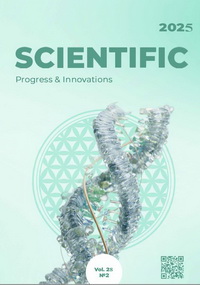Comparative characteristics of morphometric indicators of quarantine species of the genus Cuscuta (Cuscuta L.) growing in Ukraine
DOI:
https://doi.org/10.31210/spi2025.28.02.02Keywords:
species of genus Cuscuta L., quarantine weeds, parasitic plants, morphometric characteristics, apomixes, polyploidyAbstract
A review is devoted to the comparative characteristics of the morphometric and biological features of doddlers in Ukraine based on a scientific source base. The systematic position of the common quarantine parasitic plants of the genus Cuscuta L. (dodder), commonly found in Ukraine, is presented. A morphometric analysis of 15 species is provided, highlighting differences in stem diameter, length, and color, features of the flower structure, types of inflorescences, and fruit shape. The literature data indicate a high degree of similarity among Cuscuta species prevalent in our country, which significantly complicates their identification in natural environments and agrocenoses, and is insufficient for clear and, more importantly, unmistakable identification by professionals in applied branches of the agricultural industry. Knowledge of the biological characteristics of Cuscuta species is important for understanding their spread and high naturalization potential. Currently, this information is quite fragmented and insufficiently studied. Information is presented regarding the most studied species, namely: C. campestris Yunck., C. trifolii Bab., C. europaea L., C. epilinum Weihe, C. Lemanniana Bge., C. lupuliformis Krock. and C. epithymym L. An important factor in the formation of the infectious background in agrocenoses and natural environments is the seed viability period. It has been established that the longest period of preservation of its viability is observed in C. trifolii Bab. (10-12 years); up to 6 years in C. campestris Yunck, C. europaea L., and C. Lemanniana Bge. The shortest viability period is up to one year (in the soil) in C. epilinum Weihe. However, there are reports about the possibility of preserving seed viability for up to 25–30 years under conditions unfavorable for its germination. In our opinion, this is due to such a phenomenon as "hardseededness". The formation of the seed bank in the soil is also influenced by the fertility of the species. Among the Cuscuta species growing in Ukraine, this indicator has been established only for seven species: C. campestris Yunck., C. trifolii Bab., C. europaea L., C epilinum Weihe, C. Lemanniana Bge., C. lupuliformis Krock., and C. epithymym L. The largest number of seeds per plant is produced by C. Lemanniana Bge. (up to 100.000) and C. campestris Yunck. (up to 114.000). The period of emergence of seedlings has been found to be March-May. It depends on the soil temperature and the depth of seed placement. It has been determined that at a soil temperature of 16–25 ⁰С, mass seed germination occurs in May-June. The flowering period is extended and lasts from June to August.
Downloads
Published
How to Cite
Issue
Section
License
Copyright (c) 2025 Scientific Progress & Innovations

This work is licensed under a Creative Commons Attribution 4.0 International License.

 Creative Commons Attribution 4.0 International Licens
Creative Commons Attribution 4.0 International Licens